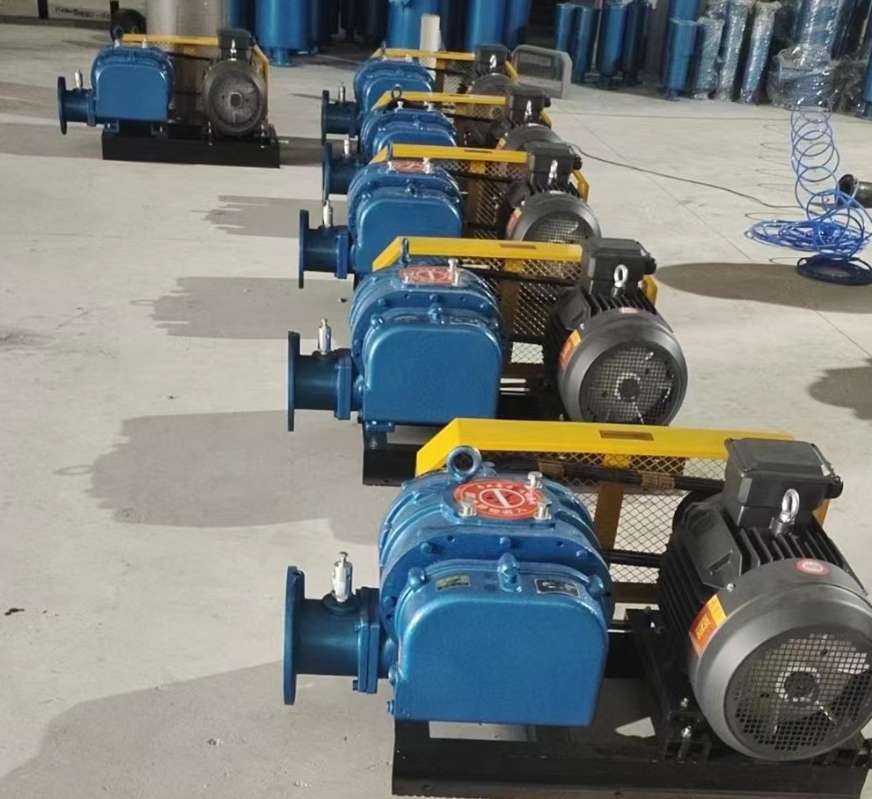离心风机与罗茨风机在通风中的适用性比较
In ventilation applications, centrifugal fans and Roots fans each have their own characteristics and applicability. The following is a detailed comparison of the two:

1、 Efficiency and energy consumption
Centrifugal fan: The efficiency range is usually between 70 and 85, depending on the design and operating conditions. Centrifugal fans have high air pressure and volume, and can quickly transport a large amount of air to designated locations, making them suitable for ventilation situations that require high air volume and low air pressure.
Roots blower: The efficiency is usually between 70 and 90, and some high-performance or foreign manufactured products may have higher efficiency. Roots blower belongs to positive displacement blower, which compresses and delivers gas through the relative motion of two blade rotors in the cylinder, suitable for low-pressure gas delivery and pressurization. Although its efficiency may be higher than that of centrifugal fans in some cases, its energy consumption is usually relatively high, especially under high pressure differential conditions.
2、 Application scenarios
Centrifugal fan: widely used for ventilation, dust removal, and cooling in factories, mines, tunnels, cooling towers, vehicles, ships, and buildings. Centrifugal fans have high air pressure and volume, which can quickly and effectively change ventilation conditions, making them very suitable for ventilation situations that require high air volume and low air pressure.
Roots blower: Although also used for ventilation, it performs well in applications that require high pressure differentials, atmospheric flow rates, and low vibration. For example, in the fields of sewage treatment, mine ventilation, material loading and unloading, and air supply for power plant combustion. Roots blower can also be used as a vacuum pump, suitable for some special ventilation needs.
3、 Noise and Maintenance
Centrifugal fan: compact structure, easy installation, stable and reliable operation, low operating noise. The maintenance of centrifugal fans is relatively simple, usually only requiring regular cleaning and lubrication.
Roots blower: Although the noise is relatively low, due to its working principle and structural characteristics, it may require more frequent maintenance and inspection. Especially the adjustment of rotor clearance and monitoring of wear are crucial for maintaining the performance and extending the service life of the fan.
4、 Cost and Investment
Centrifugal fan: Due to its wide application and mature technology, the manufacturing cost of centrifugal fans is relatively low, and the market supply is sufficient, so the price is relatively affordable.
Roots blower: Due to its special working principle and structural requirements, the manufacturing cost is relatively high. However, for applications that require high pressure differentials, atmospheric flow rates, and low vibration, Roots blowers may be a more suitable choice.
In summary, centrifugal fans and Roots fans each have their own advantages and applicability in ventilation applications. Centrifugal fans are more suitable for ventilation applications that require high air volume and low air pressure, while Roots fans are more suitable for applications that require high pressure difference, atmospheric flow rate, and low vibration. When choosing, comprehensive consideration should be given to specific application scenarios, efficiency requirements, noise limitations, maintenance costs, and investment budgets.


章丘市昶盛机械制造有限公司
联系:李经理
电话:15508667513
地址:山东省章丘市城东工业园区
邮箱:178164824@qq.com
章丘市昶盛机械制造有限公司

